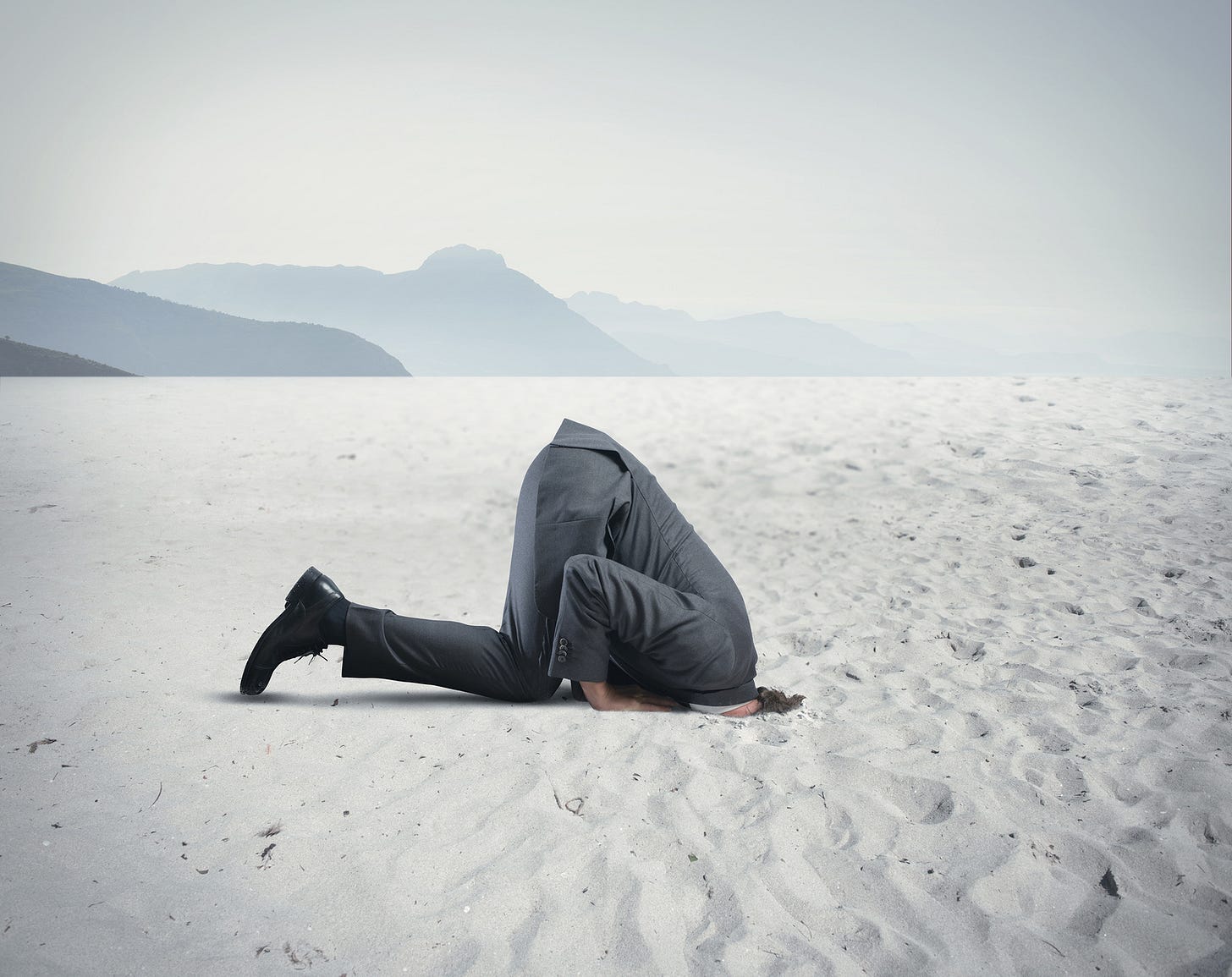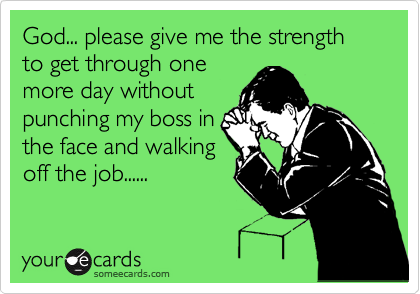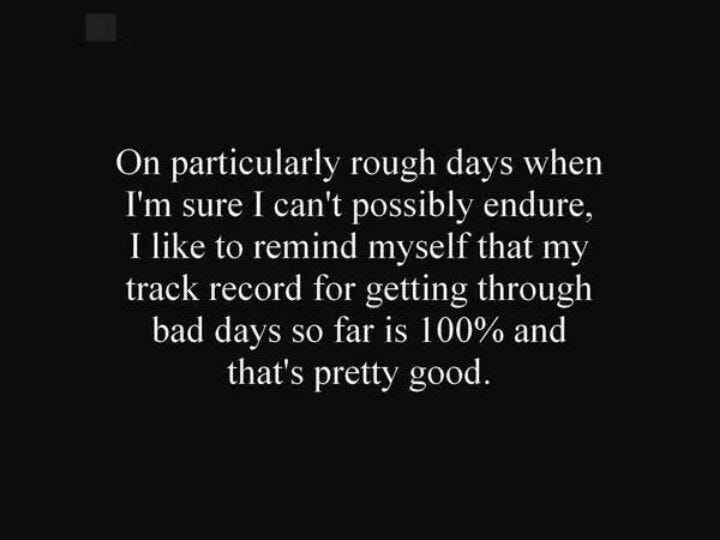Coping Ugly: Whatever Gets You Through the Day
Busting the myths of adaptive and maladaptive coping.
This is Part 4 of a four-part series on resilience and rescue when dealing with trauma.
You’ve heard the terms adaptive and maladaptive, right? There’s this idea that certain coping behaviours are good for us; therefore, we should unquestioningly do them. And then there’s these other coping behaviours that are unequivocally bad for us, and heaven help us if we do those.
That myth needs busting.
There’s almost no coping behaviour that’s all good or all bad. The word adaptive itself simply means having the capacity to adapt to different situations as they arise. This means that any behaviour that enables us to adapt is adaptive, and any behaviour that prevents us from adapting is maladaptive. It’s the circumstances that dictate what’s workable.
Most of the time when people say something is maladaptive they’re saying that, while it helps you avoid or relieve stress in the short term, it has consequences that aren’t worth it because they only compound stress in the long run. A classic example is drinking alcohol to numb out from difficult thoughts and feelings. The risk of developing a problematic habit is high, and the reward of eliminating difficult thoughts and feelings is elusive.
The truth is a lot more nuanced than that, though.
Wired for short-termism
We’re often exhorted to make today’s decisions with tomorrow’s consequences in mind. That makes perfect sense on the face of it. Of course, in an ideal world, we’d be making sure that the things we do today lead to the best possible outcomes tomorrow.
But you know what really sets us up best for tomorrow? Getting through today.
That’s precisely where short-term thinking originates. Far from being a defect, short-term thinking is literally hard-wired. Throughout our history as a species, almost all of our decisions have been short-term and reactive, and long-term planning, in many cases, would have been a very poor choice.
Imagine this: early hominid version of me is hungry. Early hominid version of me reacts to this by hunting or foraging for food to eat right now. Being proactive and planning to store the food for later when I’m hungry again is ludicrous when early hominid me doesn’t have a pantry or a freezer.
Also imagine this: early hominid version of me needs a way of sheltering from the elements. Early hominid version of me reacts to this by building a makeshift hut out of whatever sticks, leaves, and mud are around. Setting aside a portion of my early hominid income every month to save up enough for a deposit on a super-sturdy hut I’ll have to make payments on for the next twenty to forty years would not have saved early hominid me from freezing to death on the Winter Solstice.
Also imagine this: early hominid version of me is being attacked by a wolf. Early hominid version of me reacts to this by spearing the wolf so I live to see out the rest of the day. Thinking ahead to how I might domesticate said wolf so we can go hunting together would not have been conducive to early hominid me surviving long enough to humiliate myself by trying to convince the rest of the tribe of my grand plan.
I won’t belabour the point any further. You can come up with more examples of your own. The point is we got to where we are today not thanks to our ancestors’ long-term planning, but thanks to their short-term reactivity.
Anything that gets you through today is, essentially, in service of your future. That means that anything that gets you through the day is adaptive in some way – simply because not getting through today reduces your chances of long-term survival to zero.
Getting through today varies in difficulty from cruisy to a ninja warrior-level obstacle course. It’s all well and good for those who are in cruise control to signal the virtues of good habits and only good habits today, tomorrow, and forevermore. But folks on the ninja warrior obstacle course need respite and reprieve between bouts of effort in order to get through the day.
That means we’ll likely see some bad habits scattered amongst the good habits as people strive to survive. And that won’t be pretty. It’s what I call coping ugly, a term that originated with George Bonnano and Anthony Mancini in their work documenting factors that enhance resilience in the face of adversity.¹
Typical maladaptive behaviours associated with trauma broadly fit into two categories: avoidance, and approach. Let’s unpack those and look at how seemingly maladaptive coping has its place.
Coping Ugly: Avoidant Coping
After a traumatic event, some people might withdraw from social interactions, perhaps even isolating themselves for periods of time. They might cancel plans or skip social events, and maybe even go incommunicado and fail to respond to calls and messages.
While avoiding social contact reduces access to social support resources, it can also be a drain on one’s emotional resources to engage. So, a bit of social withdrawal may just be part and parcel of saving energy needed for recovery. It may also be quite targeted, in that the individual reduces their social horizon to just those they feel are best equipped to understand and support them. The important thing with social withdrawal is simply to keep track of it, aiming to on-ramp back to previous levels of engagement.
It’s also common after a traumatic event for people to avoid anything – places, people, situations, even their own thoughts – that might trigger unwanted memories of the event. This is, in fact, integral to the diagnostic criteria of PTSD.
While this type of avoidance perpetuates the fear and anxiety associated with PTSD, it is, of course, understandable that a person would want to experience as few triggers as possible. Engaging with triggers frequently is exhausting, and so it’s helpful to titrate the dosage. Too much too soon is no more helpful than complete avoidance. This means some level of avoidance is adaptive en-route to recovery, provided the avoidance is lessened over time.
Controversially, it’s also common for survivors to use alcohol or other substances as a means of reducing the pain they experience to a manageable level.
While I don’t have anything positive to say about alcohol and other substances from a health perspective (caveat: medical marijuana works wonders for a lot of people), I err on the controversial side when it comes to using substances to manage psychological pain.
The truth is a lot of addictions start in trauma, as a means of numbing or at least reducing psychological pain. This poses a challenge for folks who’ve managed to get sober after previous challenges with substance usage, and relapse is all too common after disruptive life events.
But a lot of people increase their substance usage during challenging periods of their life without it becoming a long-term problem for them. As with experiential avoidance, self-medicating serves to titrate pain dosage, and, as such, I support mindful usage over the short term. With guardrails set in place around timing, frequency, and amount consumed, it is possible to flex up substance usage during a period of acute psychological pain, and then flex that usage down again as pain levels become more tolerable.
Coping Ugly: Approach-Oriented Coping
The literal opposite of avoidance, approach mechanisms include acts such as self-triggering. Instead of aiming to avoid places, people, situations, and thoughts that might trigger unwanted memories, some survivors in fact lean into these unwanted memories. Research on self-triggering indicates a number of forms this can take, though it usually boils down to reading or watching triggering material, or visiting websites that contain triggering material.² ³
The reasons people give for self-triggering provide a lot of insight as to how helpful or harmful the activity can be. The primary reasons people give are: to make sense of a traumatic event; to release built-up emotional pressure; to punish oneself; to gain control over one’s symptoms; to stop feeling numb; and to ensure that the memory of the traumatic event does not fade or become forgotten.² ³ Obviously punishing oneself implies more harm than good comes of the behaviour. But the other reasons speak to meaning-making and mastery over one’s symptoms and event memory. With these reasons understood, it’s possible to isolate the purpose of the self-triggering behaviour and identify other ways of achieving that purpose that are harmless or at least less harmful.
Self-blame serves the purpose of giving the survivor back some of the agency that was taken away from them during their traumatic experience. While it looks pathological to self-blame for things that were beyond our control, it’s important to see it for what it is: a means of reclaiming control. It’s problematic when self-blame results in unwarranted guilt or shame. And it’s important that the individual reappraises their level of responsibility for what happened, and that self-blame doesn’t become their default response to adversity. But when a temporary phase of self-blame restores a sense of agency, it can empower a survivor to grow from their experience.
Deliberate self-harm is poorly understood by most of society, so let me try and explain it in a nutshell. Self-harm that emerges after a traumatic experience is often a means of asserting control over the one thing the individual can control: their own body. Ironically, this internalizing behaviour can have the effect of transmuting pain – i.e., by inflicting physical pain on their outer body, an individual is able to relieve and gain control over the extent of emotional pain they feel, or come to feel and express emotions that they had felt numbed to.
And while it’s common to try to numb a painful experience away, some survivors up the ante by engaging in behaviours that cause them to feel more of, well, just something. Some survivors speak to already feeling numbed by their experience, as though a switch got flipped by an experience so powerful and painful that numbing was required for survival. These folks have no need for further numbing, but are instead seeking sensation, and this may take the form of thrill-seeking or risk-taking behaviours. You’ll see this in survivors whose new habits involve things like adventure sports, riding fast motorbikes, or drink-driving.
Related to sensation-seeking, some trauma survivors act out their pain in the form of aggressive behaviour, picking fights, or otherwise sabotaging relationships. These externalizing behaviours involve transmuting internal pain to the world around the individual. As such, acting out risks causing harm to others or to the survivor, so, while we can empathize with where the impulse to act out originated from, it’s important to keep it in check.
Like with self-triggering and self-harm, sensation-seeking and acting out serve a purpose that needs to be served by safer means. And once the purpose of this behaviour is understood, it’s possible to on-ramp to a healthy exploration of the full array of emotions once again.
Getting through the day
To adapt in the aftermath of trauma, a well-resourced toolkit is what’s really going to get you over the line, as a wider variety of tools and strategies simply means you’re more likely to have the right one at hand when you need it. Being able to judge which of your tools is the best one for the job at hand is the skill to hone here, and that means being honest with ourselves, examining the strategies we’re using to cope, and pivoting when necessary.
So, instead of trying in vain to uphold the virtues of long-term thinking and planning, it helps to use our short-termism to our advantage.
When viewed through a short-term lens, distress tolerance becomes easier to learn. Once we break time down into smaller chunks with shorter horizons, it’s easier to get through any given chunk of time, riding out the waves of distress and not caving to impulses to avoid, escape, or numb out, and resisting urges to self-trigger, self-harm, or act out.
Gradual exposure to the distress of surviving trauma involves baby steps with rest stops in between. And until we’ve mastered our recovery, it’s fair to go easy on ourselves and accept that not all of our coping will be pretty. But if we’re mindful and put guardrails in place, coping ugly doesn’t have to generate collateral damage; it can just be part and parcel of being a messy human working your way through the toughest challenge of your life.
The future belongs to the adaptable because the adaptable keep on living to see another day. So, don’t let perfect be the enemy of good enough when you’re striving to survive. Do what it takes to get you through the day.
References
Bonanno, G. A., & Mancini, A. D. (2008). The human capacity to thrive in the face of extreme adversity. Pediatrics, 121, 369-375.
Bellet, B. W., Jones, P. J. & McNally, R. J. (2020). Self-Triggering? An Exploration of Individuals Who Seek Reminders of Trauma. Clinical Psychological Science, 8(4), 739–755. doi: 10.1177/2167702620917459
McGhie, S. F., Bellet, B. W., Mellen, E. J. & McNally, R. J. (2023). Self-Triggering: Does Function Determine Pathogenesis? Psychological Trauma: Theory, Research, Practice, and Policy, 15(6), 951–960. https://doi.org/10.1037/tra0001195




